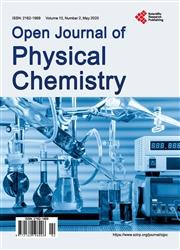Covalent Bonds Creation between Gas and Liquid Phase Change: Compatibility with Covalent and Even-Odd Rules Based on a “Specific Periodic Table for Liquids”
引用次数: 2
Abstract
A decrease in temperature will eventually turn a gas into liquid and then into a solid. Each of these phase change shows a higher degree in cohesion of molecules. While it is usually admitted that molecules in solids form additional connections, the cohesion of molecules in liquids is usually explained by changes in kinetics of molecules. Given that the density of a solid is nearly the same than that of a liquid, the present paper assumes a different stand and considers that connections between molecules must be similar in liquids and in solids. The difference between gas, in which molecules are entirely loose, and liquid, is therefore the presence of an additional connection between gaseous molecules. This paper describes how and where these connections are built with the help of a few rules and a “specific periodic table for liquids”. The coherence of this approach is reinforced by its capacity to explain phase change of forty well-known molecules containing inorganic and organic elements.气体和液体相变之间共价键的产生:与基于“液体特定周期表”的共价和奇偶规则的兼容性
温度的降低最终会使气体变成液体,然后变成固体。每一种相变都表明分子的内聚程度更高。虽然人们通常承认固体中的分子形成额外的连接,但液体中分子的内聚通常用分子动力学的变化来解释。鉴于固体的密度与液体的密度几乎相同,本文采取了不同的立场,认为液体和固体中分子之间的连接必须是相似的。因此,分子完全松散的气体和液体之间的区别在于气体分子之间存在额外的连接。本文借助一些规则和“液体的特定元素周期表”描述了这些连接是如何以及在哪里建立的。这种方法的一致性因其能够解释40种已知的含有无机和有机元素的分子的相变而得到加强。
本文章由计算机程序翻译,如有差异,请以英文原文为准。
求助全文
约1分钟内获得全文
求助全文

 求助内容:
求助内容: 应助结果提醒方式:
应助结果提醒方式:


